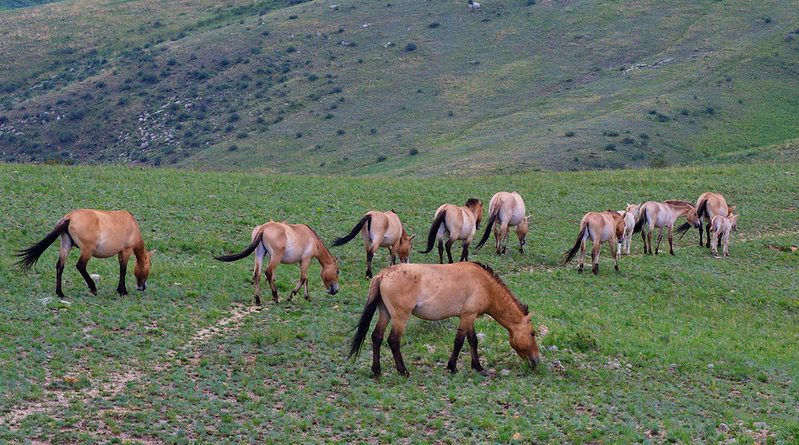Carriers of Khan’s Army: Takhi Horses
Nature Facts
Where: Native only to Mongolia
Background: Once used to conquer the world by Genghis Khan, now these shy little horse horse have come within a mane of extinction
Fact: There are only 200 Takhi horses in the wild
Equine Spirit
Horses play a major part of Mongolian lifestyle and culture, and although it has no specific role in the life of the average Mongolian, there is none more special than the Takhi and the reverence of the people towards them is shown by their name, which means spirit or spirited. Their national significance has been dramatically increased by the belief that these were the horses used by Genghis Khan and his army.
These are the native horses of Mongolia, smaller, and with more unusual colouring than their domesticated relatives are, and have been credited with being the only surviving species of wild horse left in the world. Over the last 100 years they have come to the brink of extinction, but amazingly have been saved by European zoos, and are now thriving again in their natural habitat, but it has been a long battle.
The Takhi, or Przewalski’s horse (named after a Polish explorer who first brought them into Europe), are native exclusively to Mongolia, and live in the open plains, and semi-desert of the Mongolian landscape, living off grasses, leaves, barks and buds. They are typically about four feet in height to the shoulder, with distinctively large heads, pale colouring, and dark, erect, zebra-like manes. In the winter they are an unusual beige colour, which blends into their steppe environment, with a white back, which fades to a darker colour in the summer as the snow on the mountain tops melts.
Battle for Survival
The threat to these unusual animals has come from increased competition for pastureland from farmed livestock, and their shy nature means that they were easily driven away from the limited water supplies of the semi-desertous landscape. They are still an endangered species, and prior to re-introduction programs none had been seen in the wild since 1968, though a significant number still survived in zoos all over the world. Breeding in captivity has made it possible for reintroduction of the species into Mongolia to take place. The main destination of these animals has been the Khustain Nuruu Reserve, about 65 miles west of Ulaan Baatar, where fenced acclimatisation areas allow the horse to become used to their new environment before they are released into the wild. Despite disastrous and ill-planned earlier attempts in other areas, this project has been a relative success, and there are now over 200 Takhi back in Mongolia.
More Information
Zoo goer: Takhi: The Last Wild Horse
Detailed description of the how the Khustain Nuruu reserve came into being, and how it has saved these horses
By Guilia Vincenzi




